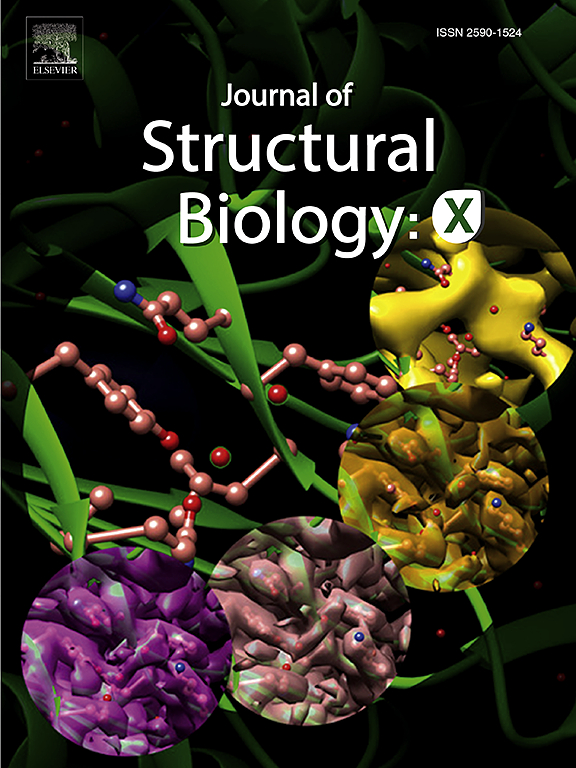Conformational landscape of the mycobacterial inosine 5′-monophosphate dehydrogenase octamerization interface
IF 2.7
3区 生物学
Q3 BIOCHEMISTRY & MOLECULAR BIOLOGY
引用次数: 0
Abstract
Inosine 5′-monophosphate dehydrogenase (IMPDH), a key enzyme in bacterial purine metabolism, plays an essential role in the biosynthesis of guanine nucleotides and shows promise as a target for antimicrobial drug development. Despite its significance, the conformational dynamics and substrate-induced structural changes in bacterial IMPDH remain poorly understood, particularly with respect to its octameric assembly. Using cryo-EM, we present full-length structures of IMPDH from Mycobacterium smegmatis (MsmIMPDH) captured in a reaction intermediate state, revealing conformational changes upon substrate binding. The structures feature resolved flexible loops that coordinate the binding of the substrate, the cofactor, and the K+ ion. Our structural analysis identifies a novel octamerization interface unique to MsmIMPDH. Additionally, a previously unobserved barrel-like density suggests potential self-interactions within the C-terminal regions, hinting at a regulatory mechanism tied to assembly and function of the enzyme. These data provide insights into substrate-induced conformational dynamics and novel interaction interfaces in MsmIMPDH, potentially informing the development of IMPDH-targeted drugs.

分枝杆菌肌苷5'-单磷酸脱氢酶八聚界面的构象景观。
肌苷5′-单磷酸脱氢酶(Inosine 5′-monophosphate dehydrogenase, IMPDH)是细菌嘌呤代谢的关键酶,在鸟嘌呤核苷酸的生物合成中起重要作用,有望成为抗菌药物开发的靶点。尽管其意义重大,但细菌IMPDH的构象动力学和底物诱导的结构变化仍然知之甚少,特别是关于其八聚体组装。利用低温电镜,我们展示了耻垢分枝杆菌(MsmIMPDH)在反应中间状态下的全长结构,揭示了底物结合后的构象变化。该结构具有可分解的柔性环,可协调底物、辅因子和K+离子的结合。我们的结构分析确定了MsmIMPDH特有的一种新的八域化界面。此外,先前未观察到的桶状密度表明c端区域内潜在的自相互作用,暗示与酶的组装和功能相关的调节机制。这些数据提供了对底物诱导的构象动力学和MsmIMPDH中新的相互作用界面的见解,可能为impdh靶向药物的开发提供信息。
本文章由计算机程序翻译,如有差异,请以英文原文为准。
求助全文
约1分钟内获得全文
求助全文
来源期刊

Journal of structural biology
生物-生化与分子生物学
CiteScore
6.30
自引率
3.30%
发文量
88
审稿时长
65 days
期刊介绍:
Journal of Structural Biology (JSB) has an open access mirror journal, the Journal of Structural Biology: X (JSBX), sharing the same aims and scope, editorial team, submission system and rigorous peer review. Since both journals share the same editorial system, you may submit your manuscript via either journal homepage. You will be prompted during submission (and revision) to choose in which to publish your article. The editors and reviewers are not aware of the choice you made until the article has been published online. JSB and JSBX publish papers dealing with the structural analysis of living material at every level of organization by all methods that lead to an understanding of biological function in terms of molecular and supermolecular structure.
Techniques covered include:
• Light microscopy including confocal microscopy
• All types of electron microscopy
• X-ray diffraction
• Nuclear magnetic resonance
• Scanning force microscopy, scanning probe microscopy, and tunneling microscopy
• Digital image processing
• Computational insights into structure
 求助内容:
求助内容: 应助结果提醒方式:
应助结果提醒方式:


